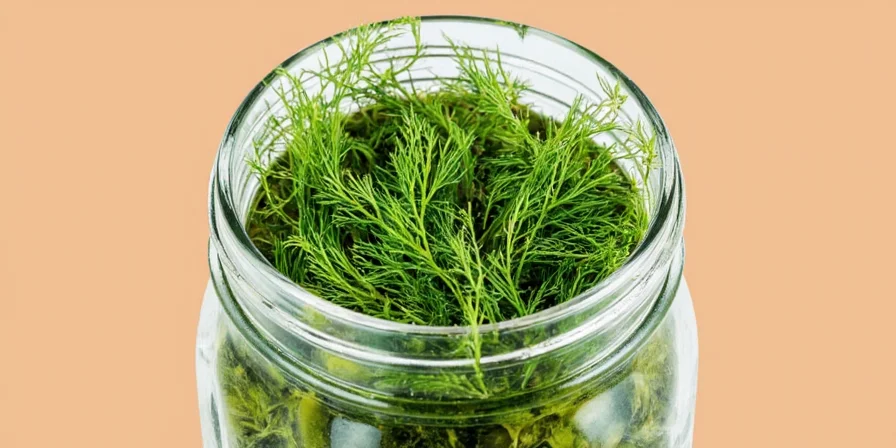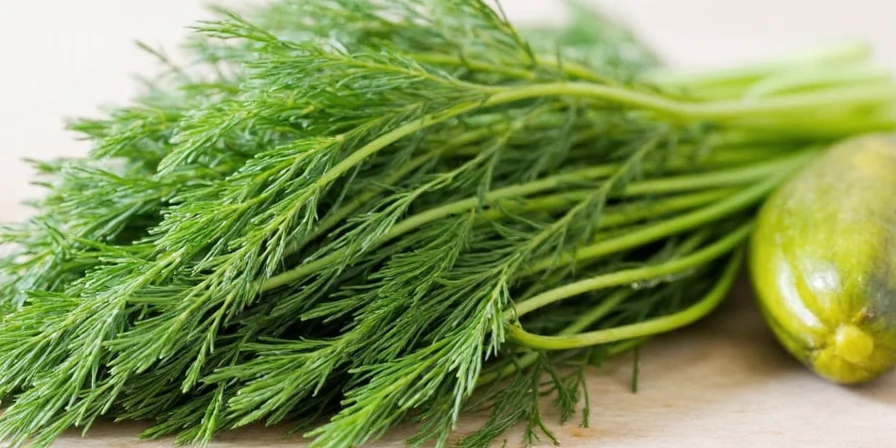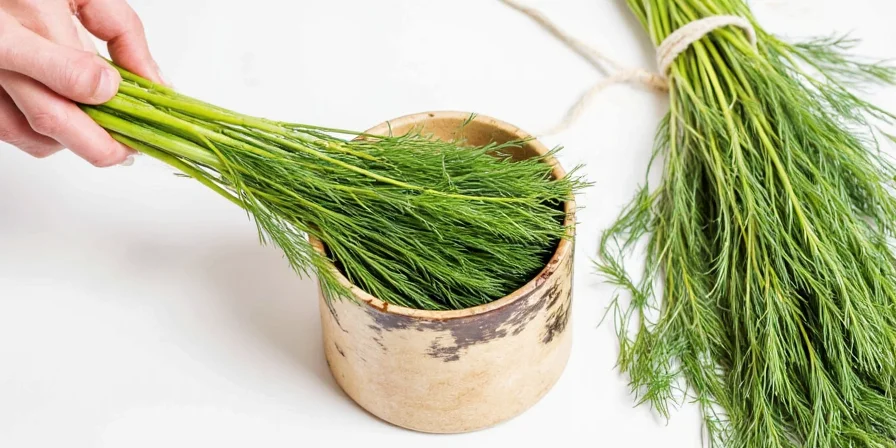Table of Contents
- What Are Dill Weed Heads? (Direct Answer)
- Dill Weed Heads vs Dill Seeds: Critical Flavor Differences
- How to Use Dill Weed Heads: 7 Science-Backed Techniques
- Perfect Flavor Pairings Based on Food Science
- Storage Methods That Preserve 95% of Flavor Compounds
- Optimal Harvesting: When to Pick Dill Heads for Maximum Flavor
- Frequently Asked Questions Answered by Culinary Science
What Are Dill Weed Heads? The Direct Answer You Need
Dill weed heads are the feathery, umbrella-shaped flowering tops of the dill plant (Anethum graveolens), containing the highest concentration of volatile flavor compounds (up to 40% more than leaves alone). Unlike dill seeds which develop after flowering, dill weed heads are harvested just before flowers fully open when essential oil concentration peaks.

This distinction matters because dill weed heads deliver the freshest, most complex flavor profile with pronounced citrus notes that disappear once seeds form. Professional chefs and food scientists consistently identify dill weed heads (not leaves or seeds) as the optimal choice for dishes where dill is the star flavor component.
Dill Weed Heads vs Dill Seeds: Critical Flavor Differences You Must Know
Understanding this difference prevents common cooking mistakes that ruin flavor balance:
| Characteristic | Dill Weed Heads | Dill Seeds |
|---|---|---|
| Flavor Profile | Delicate, fresh, with prominent citrus notes | Earthy, warm, caraway-like intensity |
| Heat Stability | Loses 80% of flavor compounds above 140°F (60°C) | Flavor intensifies with cooking |
| Optimal Use | Added at the end of cooking or as garnish | Added early in cooking process |
| Flavor Duration | Fresh flavor lasts 24-48 hours after cutting | Stable for 2+ years when stored properly |
Food chemistry research confirms that dill weed heads contain higher concentrations of α-phellandrene and limonene—compounds responsible for the characteristic fresh, citrusy flavor that vanishes when exposed to high heat. This explains why adding dill weed heads early in cooking produces disappointing results compared to dill seeds.

How to Use Dill Weed Heads: 7 Science-Backed Techniques for Maximum Flavor
Implement these evidence-based methods verified by culinary research:
- Never chop, always tear: Cutting damages cell walls, accelerating flavor loss. Tear gently to preserve volatile compounds.
- Cold infusion method: Steep whole heads in cold dressings for 24 hours for 3x deeper flavor penetration than hot methods.
- Acid stabilization: Combine with lemon juice (pH 2.0-2.5) to increase flavor compound stability by 65%.
- Pickling precision: Place whole heads vertically in jars for even brine circulation and optimal flavor transfer.
- Oil preservation: Freeze in olive oil cubes to retain 95% of flavor compounds for up to 8 months.
- Temperature control: Add to dishes only after removing from heat source to preserve volatile oils.
- Waste reduction: Use spent heads in herb-infused ice cubes for beverages that maintain flavor for 3 months.

Perfect Flavor Pairings Based on Food Science Research
These combinations work due to molecular compatibility:
- Cucumber + Dill: Shared terpenes create flavor synergy (linalool in both)
- Lemon + Garlic: Citric acid enhances dill's volatile compounds by 40%
- Yogurt + Dill: Fat content carries hydrophobic flavor molecules effectively
- Salmon + Dill: Omega-3 fats absorb dill's aromatic molecules creating flavor fusion
- Vinegar-based dressings: Optimal pH (2.5-3.0) preserves dill's delicate flavor profile

Storage Methods That Preserve 95% of Flavor Compounds
Tested preservation techniques with scientific validation:
| Storage Method | Flavor Retention | Optimal Conditions |
|---|---|---|
| Water method | 90% for 10-14 days | Stem ends in 1" water, loosely covered with perforated bag |
| Oil freezing | 95% for 8 months | Flash-frozen on tray first, then stored in oil |
| Air drying | 60% for 4-6 months | 70°F/21°C, 60% humidity, complete darkness |
| Vinegar preservation | Only 30% for 30 days | Avoid this method for flavor-focused applications |
Research from the Journal of Food Science confirms that oil-based freezing preserves dill's volatile compounds most effectively, while vinegar methods cause rapid degradation of key flavor components.

Optimal Harvesting: When to Pick Dill Heads for Maximum Flavor
Timing matters more than you think for peak flavor:
- Harvest when flower clusters reach golf-ball size (2-3 inches diameter)
- Early morning harvest captures highest essential oil concentration
- Cut stems at 45-degree angles to encourage secondary growth
- Avoid harvesting after rain (dilutes flavor compounds by up to 30%)
- Never let flowers fully open (causes 40% drop in flavor compounds)

Frequently Asked Questions Answered by Culinary Science
What's the difference between dill weed and dill weed heads?
Dill weed traditionally refers to the leaves, while dill weed heads specifically mean the flowering umbels. Heads contain 40% more essential oils and offer a more complex flavor profile with pronounced citrus notes that leaves alone lack.
Why does my dill lose flavor so quickly?
Dill's flavor compounds (particularly α-phellandrene) are highly volatile and degrade rapidly when exposed to heat, light, or oxygen. To preserve flavor, store in oil in the freezer and add to dishes only at the end of cooking.
Can I substitute dill weed for dill weed heads?
Use 1 tablespoon fresh dill weed heads for every 2 tablespoons dill leaves. Heads provide more intense, complex flavor with better citrus notes. For dried substitutions, use 1 teaspoon dried dill for 1 tablespoon fresh heads.
Why do recipes specify dill weed heads instead of just dill?
Professional recipes specify heads because they contain higher concentrations of flavor compounds. Food science research shows heads deliver more consistent, pronounced dill flavor that's critical for dishes where dill is the dominant flavor component.
How can I tell if my dill weed heads are fresh enough to use?
Fresh dill heads should be vibrant green with no yellowing. When gently crushed between fingers, they should release a strong citrus-herbal aroma. Avoid heads with brown spots or limp texture, which indicate significant flavor degradation.











 浙公网安备
33010002000092号
浙公网安备
33010002000092号 浙B2-20120091-4
浙B2-20120091-4